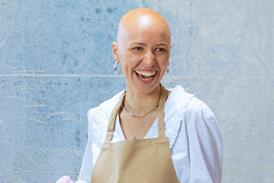Hannah Stephenson-Kelly writes about the gift of having sisters, and brings to mind the sisters Jesus knew - Mary and Martha.

There is a scene in Greta Gerwig’s adaptation of Little Women, in which Laurie arrives at the March sisters door and finds it opened into a world of chaos, comfort, squabbling and affection. I have often thought that arriving at the Kelly household must have felt much the same.
As one of four girls, I know that my relationship with my sisters has been and continues to be some of the most formative relationships I have. Though we are all individuals within our own right, and at times come up against the reality of our differences, there is a deep bond and love that runs as a constant beneath the waves of these things.
As one of four girls, I know that my relationship with my sisters has been and continues to be some of the most formative relationships I have
In fact, I know that most people who have met us would say that they could spot a Kelly girl in a crowd. Our shared characteristics can be found in deep thought, courage, creativity and the desire to create a world that is just that bit more whole for those around us.
As we celebrate International Women’s Day this month and in thinking about my sisters, I feel drawn to the sisters whom we know Jesus counted as his closest companions: Martha and Mary. Luke’s gospel reveals their personality differences, but in John’s gospel we see just how similar their hearts were.
John writes that Jesus loved Martha and her sister and Lazarus. It isn’t very often that individuals outside of the disciples get named and granted such intimate relationship with Jesus. Therefore, we can be sure that there must have been a particularly unique relationship amongst them for it to be worthy of mention.
Indeed, it is to these two sisters that both Jesus’ humanity and identity as the Resurrected one is revealed.
The intimacy of the relationship is exemplified as Martha expresses her grief and frustration, but still boldly declares that she knows that ‘even now’ Jesus could bring about a miracle. Mary then rushes out and her tears move Jesus to weep, a moment of profound vulnerability that has moved generations of readers since.
Though different, these two women carried the same faith, hope and love for God. Indeed, it is to these two sisters that both Jesus’ humanity and identity as the Resurrected one is revealed.
Now I am clearly abundantly blessed with biological sisters, but this story and the relationship between many of the women in the gospels has a lot to say about the power of sisterhood more broadly.
‘Sisterhood’ is not just a statement flying on banners during protests or a label that ties together a group of women in a 90s sitcom. It is a connection that transcends these things. True sisterhood holds the tension that arises in our differences. It holds space for hope in the midst of joy and grief. It holds space for the other in the now and the yet to come.
In John’s account it becomes the relational foundation upon which Jesus’ resurrection power is displayed and it will become the foundation for the first witness of the gospel.
Holding this space is not always plain sailing, as Luke’s account of Mary and Martha’s sibling dispute testifies. For these relationships to bear fruit time, humility and courage are required. The result of this investment is ripe ground for resurrection.
Read more on sisterhood
The cross-generational sisterhood
A Message from the Editor: Thanking the women who make a difference in our lives
For the young Lorrie walking into the March sisters household, their relationships and the warmth of their home set the scene for a redemptive turn in his perception of the world. For Jesus, it was the intimate relationship and deep bond between two sisters that set the turning point in his ministry, as his resurrection power was revealed.
As we focus on celebrating women around the world, let’s take heart that our connection as sisters in Christ can set the stage for a move of his intimacy and power today.



































No comments yet